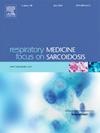The effect of sampling method on the success of tissue diagnosis and molecular profiling in ultrasound guided biopsies for lung cancer
IF 3.1
3区 医学
Q2 CARDIAC & CARDIOVASCULAR SYSTEMS
引用次数: 0
Abstract
Background and aims
In lung cancer diagnosis tissue should be adequate for identification of tumour type, and for testing for molecular alterations including multi-target next generation sequencing (NGS) where resources allow. This study aimed to examine the sufficiency of percutaneous ultrasound (US) guided samples obtained via the 2 main sampling methods; fine needle aspiration (FNA) and core biopsy (CB) for different levels of lung cancer testing.
Methods
Details of US-guided procedures carried out for lung cancer diagnosis were retrospectively collected. FNA and/or CBs were carried out according to feasibility and on-site cytology was not available. Diagnostic yields for histological diagnosis, limited molecular panel and multi-target NGS panel were calculated for each procedure.
Results
Out of 66 samples, the yield for identifying tissue type was 95.4 % with no difference in yield between FNA and CBs (92.7 % and 93.6 % respectively). 32 samples were sent for multi-target NGS, with a success rate of 71.9 %. This was improved from 66.7 % to 76.5 % when both sampling methods were done as opposed to either method alone.
Conclusion
US-guided biopsies have high yield for tissue diagnosis in lung cancer and reasonable adequacy for extended genomic profiling. The results suggest that carrying out both FNA and CB improves the overall yield. Further prospective studies with standardized protocols are needed to confirm these findings.
超声引导肺癌活检中取样方法对组织诊断和分子谱成功的影响
背景和目的在资源允许的情况下,肺癌诊断组织应足以用于肿瘤类型的识别和分子改变的检测,包括多靶点下一代测序(NGS)。本研究旨在检验通过两种主要采样方法获得的经皮超声(US)引导样本的充分性;细针抽吸(FNA)和核心活检(CB)用于不同水平的肺癌检测。方法回顾性收集美国指导下肺癌诊断的详细资料。FNA和/或CBs是根据可行性进行的,没有现场细胞学。计算每个程序的组织学诊断、有限分子组和多靶点NGS组的诊断率。结果66份标本中,FNA和CBs的组织类型鉴别率分别为92.7%和93.6%,差异无统计学意义(p < 0.05)。共发送32份样本进行多靶点NGS检测,成功率为71.9%。与单独使用任何一种抽样方法相比,使用两种抽样方法时,这一比例从66.7%提高到76.5%。结论us引导活检对肺癌的组织诊断有较高的准确率,对扩展的基因组谱分析有合理的充分性。结果表明,同时进行FNA和CB可提高总收率。需要采用标准化方案的进一步前瞻性研究来证实这些发现。
本文章由计算机程序翻译,如有差异,请以英文原文为准。
求助全文
约1分钟内获得全文
求助全文
来源期刊

Respiratory medicine
医学-呼吸系统
CiteScore
7.50
自引率
0.00%
发文量
199
审稿时长
38 days
期刊介绍:
Respiratory Medicine is an internationally-renowned journal devoted to the rapid publication of clinically-relevant respiratory medicine research. It combines cutting-edge original research with state-of-the-art reviews dealing with all aspects of respiratory diseases and therapeutic interventions. Topics include adult and paediatric medicine, epidemiology, immunology and cell biology, physiology, occupational disorders, and the role of allergens and pollutants.
Respiratory Medicine is increasingly the journal of choice for publication of phased trial work, commenting on effectiveness, dosage and methods of action.
 求助内容:
求助内容: 应助结果提醒方式:
应助结果提醒方式:


